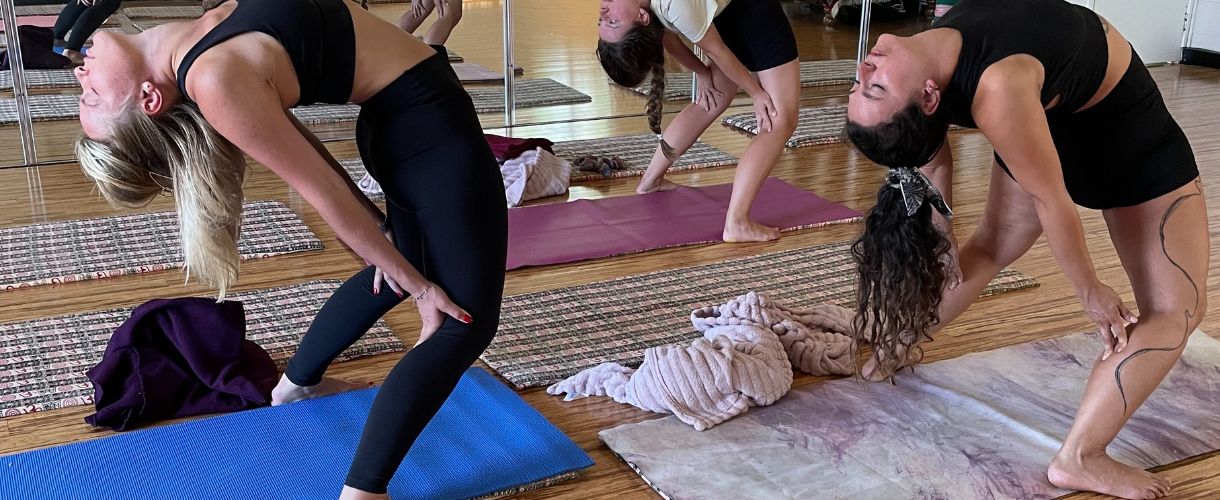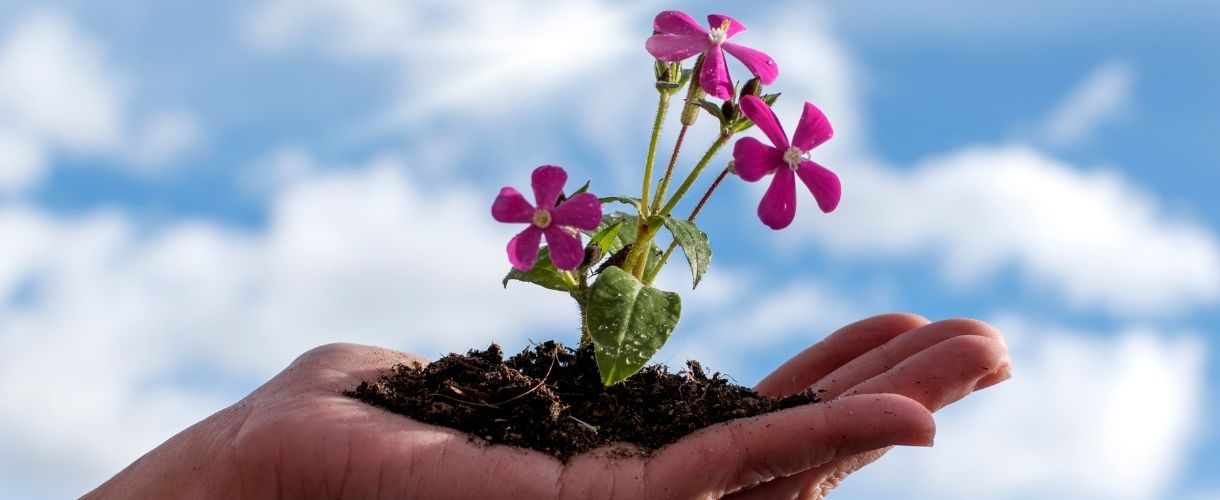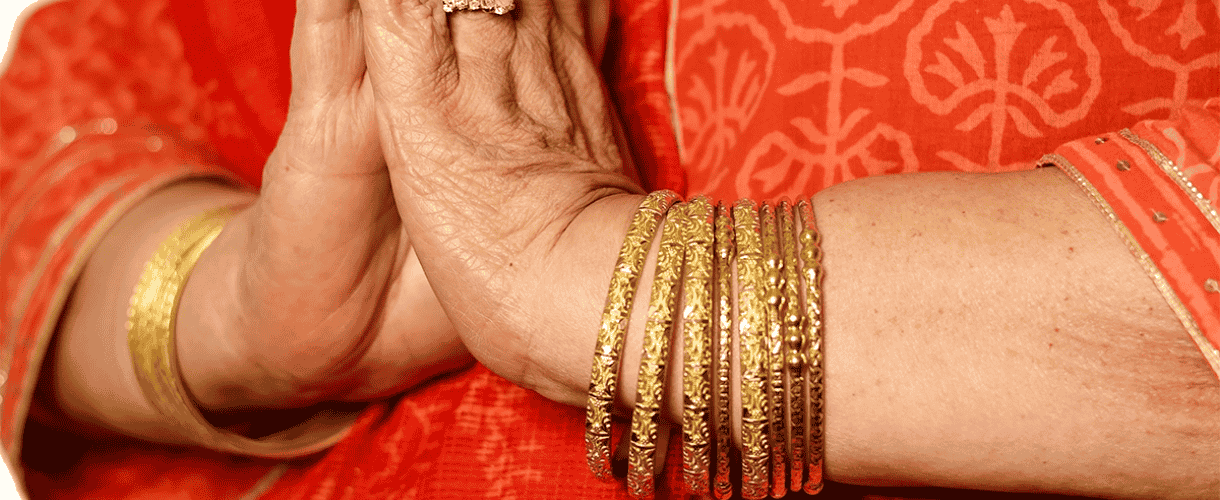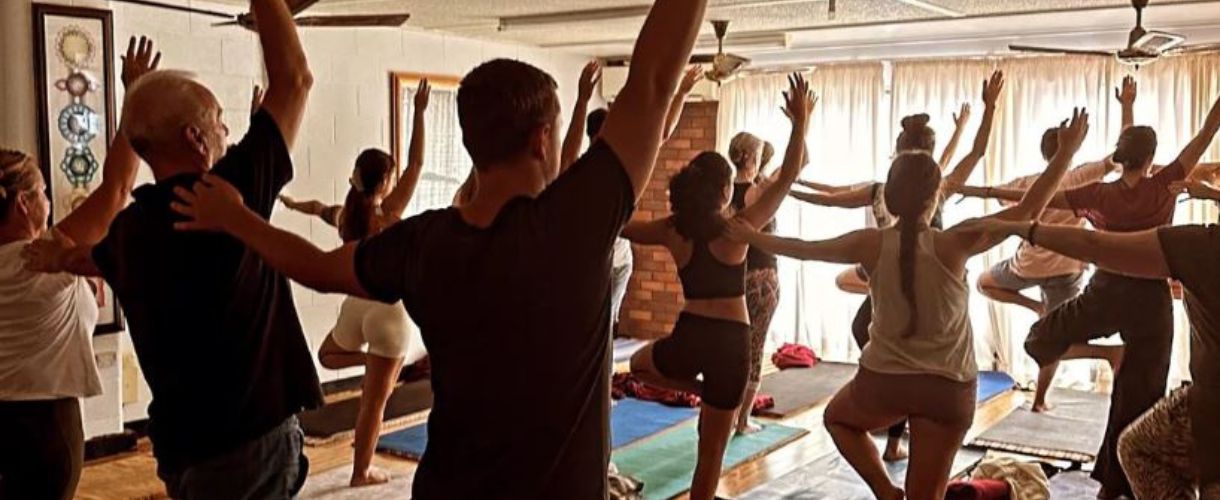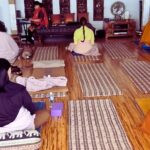
Quelling Anxiety and Mental Distress by Engagement in Yoga
March 27, 2025A Peak into a Shanti Yoga Class
Paulina (from Lithuania, Certificate IV Yoga), Yamila (from Argentina, Certificate IV Yoga) and Kristina (from Latvia, Diploma of Yoga Teaching, second year of study), are three of Health Institute Australasia's International course students in Thursday morning's Yoga class, 13 March 2025. It's a timetabled, weekly session held in the Yoga studio of our Southport campus. The transition from practising yoga to becoming a yoga teacher is the transition from being a doer to becoming a leader.
This accessible backbend is part of the Shanti Yoga Standing Vinyasa series. It deeply stretches the muscles at the front of your body—including your thighs, hips, abdomen, and chest—while strengthening the muscles in your back, buttocks, hips, and legs as they support the pose.
Our modern lifestyles often place us in flexion-leaning positions, such as when typing, texting, driving, cooking and more, leading to muscle weakness and tightness over time. Controlled Shanti Yoga extensions of your spine, shoulders and hips counteract these patterns. Backbends can also be energising, uplifting, and help combat fatigue.
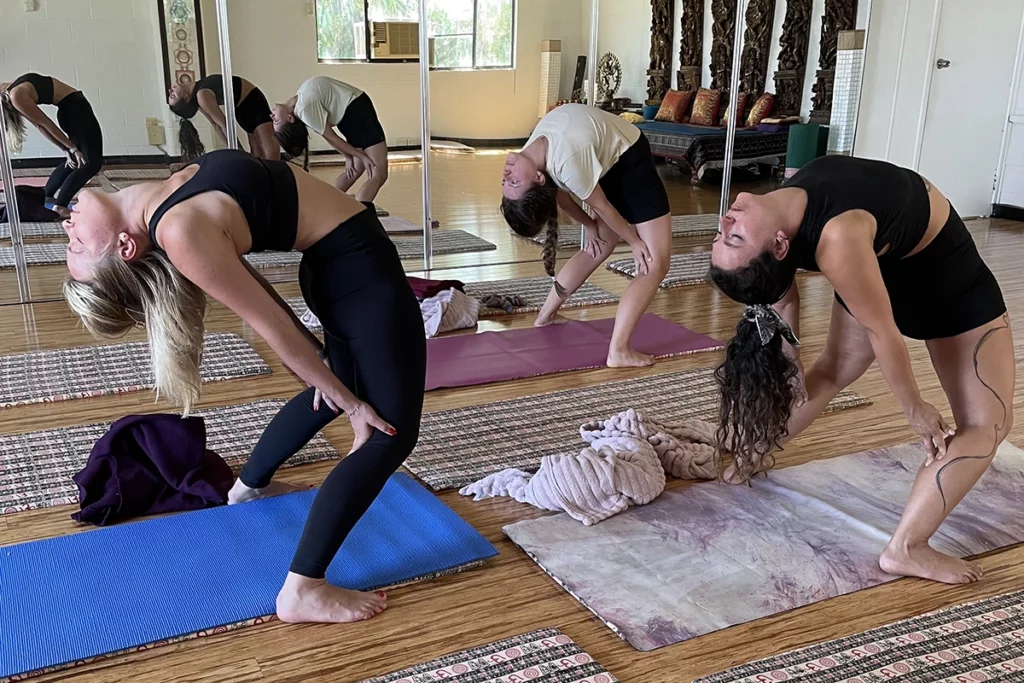
ALIGNMENT
- Feet approximately hip distance apart
- Knees bent away from your hips to create length
- Big toes pressed down
- Thighs squeezed in parallel
- Pelvis thrust forward
- Hips lifted up
- Breastbone lifted out and up
- Hands placed at the back of your thighs (or knees, calves or ankles), slightly wider than shoulder-distance apart
- Head and neck relaxed, leaning back
- Breath full, your heart expanding
- Energy lifted, feeling energised and confident
LOWER LEGS
Your calf muscles (gastrocnemius) stabilise, while in a neutral or lengthening position, and your shin muscles (Tibialis anterior) dorsiflex your ankles, aligning them with your shins and knees.
THIGHS
Your hip extensors engage while your hip flexors mostly stretch. Your hip adductors engage to maintain your thighs in parallel. Your quadriceps engage while lengthening, working with your hamstrings to stabilise your hips and knees.
TORSO AND SPINAL FLEXIBILITY
Backbends (spinal extension) push your intervertebral discs slightly forward, while strengthening your back muscles. Your spinal extensors engage to extend your spine, and your abdominals stretch strongly, perhaps with some engagement. Your pectoralis major muscles stretch as you broaden your chest, while stabilising you in position. Your middle and lower trapezius work with your rhomboids to retract and stabilise your scapulae, while your serratus anterior stretches. Many yogis allow too much bending or hyperextension in the lower back. If this is you, focus on lengthening your lower back instead of crunching and sinking into it. Although your lumbar spine has a greater capacity for extension than your thorax, try to make the extension more even.
NECK AND ARMS
Your posterior deltoids, latissimus dorsi and teres major muscles engage to extend your shoulders, while your triceps extend your elbows. Your wrist flexors are stretched gently. Lift your gaze, and engage your cervical extensors to extend your neck, while your cervical flexors stabilise, preventing your head from being thrown back, and creating an even, controlled curve. (NOTE: The head does not drop back). This subtle, controlled neck extension protects the small, complex joint structures. Your cervical flexors passively stretch, allowing a gentle extension of your neck.
VARIATION
For a gentler backbend, place your hands on your hips as you lean back slightly into the pose.
RISK
Risk factors include prolonged use of birth control, migraines, pregnancy and smoking.
Without the proper preliminaries and warming up, cervical hypertension (dropping the head back) increases the risk of injury, including vertebral artery and joint damage, impaired blood flow and stroke. The risk is increased for the elderly.
HEALTH, HAPPINESS AND LONGEVITY
Classes that lift you up
Classes that inspire
Classes that challenge
Classes that empower
Classes that knock your socks off.
It's all here, and in refreshing reverse cycle air-conditioning.
Join us for safe, effective, awe-inspiring, accessible, diverse Yoga, a welcoming community, and experienced and caring teachers.


